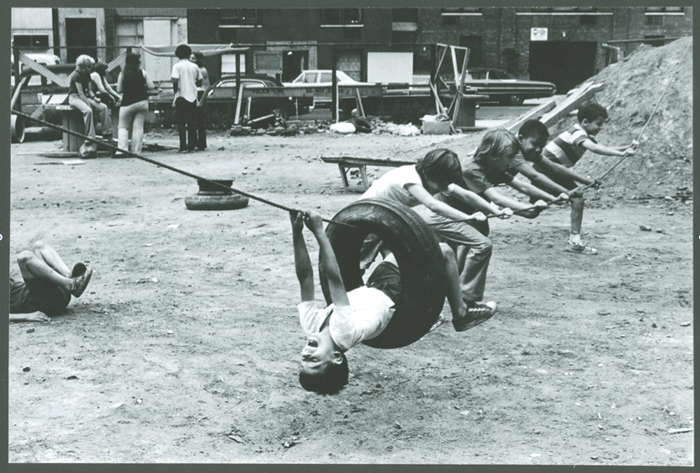
Copyright © Diana Mara Henry / http://www.dianamarahenry.com
Diana Mara Henry is an American veteran photojournalist that began her career in the 1960s. I ran across her work while researching vintage playgrounds and reached out to her so I could get the deeper story behind a certain series of photographs she took in NYC of the Adventure Mountain Playground for the Lenox Hill Neighborhood Association in 1971. I was researching the social psychology of early playgrounds that brought different races, genders, and religions of children together to play and enjoy life and learning through movement. The 1971 images by Diana Mara Henry really captured the essence of an important part of the American playground and social history that needs to be highlighted again. History matters. Look back. Learn. Move forward.
“Probably should have begun long ago to share the stories behind the photographs for which I receive requests, with the often eloquent and fascinating voices of the folks who want to use them. I was so intrigued by Ron Jones’ genius in his field that I asked him to annotate these.”
-Diana Mara Henry, Photojournalist
Ron Jones: There are many deep sociological and historical messages in this photograph. First, it’s FUN! Look at the sheer joy of the little boy hanging upside down in the tire. It’s simple analog fun—no batteries required. All you need is a tire, rope, and friends. The friends represent the important lesson of teamwork. Without your friends slinging you around inside the tire, this activity would be far less dynamic. There is also an “unpredictability” in terms of movement reaction if you are trying to stay inside the tire when your friends are working hard to sling you around. This reaction to multiple forces creates a higher skill challenge that is more fun and better for the brain and body. There are also different races of boys here working together which is yet another important sociological lesson for kids (and adults). This image also portrays an important part of playground evolution and history which includes the “adventure playground.” These adventure playgrounds were also called junk playgrounds and had various pieces of simple play equipment like tires, ropes, concrete blocks, pipe, wooden structures, etc. The idea with adventure playgrounds was also to provide tools like hammers and saws so the children could have the freedom to “create” their own playground activities. The building of one’s own exercise equipment was historically called “Labor Engineering” and was popular during WWII when US Soldiers would construct their own outdoor apparatus obstacle courses–the work of “sweat equity” by youth to help build their own playgrounds was also used by landscape architect Robert “Bob” Leathers who built many adventure playgrounds around the US during this era.
In the process of making the playground and exercise equipment, there are many lessons on problem-solving, manual skills for hand agility, muscular fitness, teamwork, and creativity. In 1975, award-winning landscape architect M. Paul Friedberg wrote “Handcrafted Playgrounds” which included this passage in his introduction that summarizes the benefits of “hands-on” construction of playgrounds: “Anyone can build a playground, and the actual process building it can be as important as the finished product. It gives the builders (who certainly should include the children for whom it is planned) a chance to shape their environment, to create something to answer their specific needs.”
References:
- Diana Mara Henry Photography
- Diana Mara Henry Spotlight: “Children at Play Photo Collection”
- “Playground Uses Scrap Materials” (New York Times, OCT 10, 1971)
- “Playadise Lost: Restoring Playgrounds & Building Your Own” (Ron Jones)
–Ron Jones, MS, Historical Kinesiologist, Physical & Health Educator